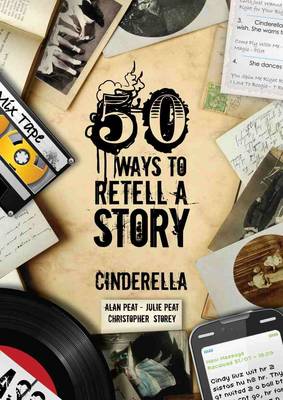50 Ways To Retell A Story: Cinderella does exactly what it says on the cover - retells the favourite fairytale Cinderella - in fifty brand new ways! As a haiku, a recipe, a text message, a story written in 'pig Latin,' a diary entry, a ghost story and forty-four other innovative ways. The language play involved will interest any avid reader, but the book has, predominantly, been written with the Primary and Secondary school classroom in mind. 50 Ways to Retell a Story - Cinderella provides teachers with 50 literacy lessons, starter sessions or extension activities which ensure a creative, engaging approach to the teaching of literacy. While the familiar format of an old favourite like Cinderella can encourage reluctant writers to 'have a go', more able pupils will relish the challenges of completing the more complex re-tellings. And all of the approaches exemplified in 50 Ways To Retell A Story: Cinderella can be applied with any other traditional tale. Author Alan Peat explains: The inspiration for the book came from Raymond Queneau's work Exercises in Style, which is a collection of ninety-nine different retellings of the same tale.
Queneau was one of the founders of OULIPO, a French group of mathematicians and writers who believed that constraints, paradoxically, lead to greater creativity. One of the examples in the book retells Cinderella as a lipogram. A lipogram is a key Oulipean constraint which bans the use of a certain letter or letters in the alphabet. While the story must remain the same, the language chosen to tell that story changes significantly. If we ban, for example, the letter 'a' in the retelling of Cinderella, our heroine must be re-named, can't go to a 'ball', or a 'dance', or even a 'party' but she would be allowed to go to a 'soiree' or 'exclusive reception'. This retelling specifically encourages practical use of a thesaurus, but more importantly, if we encourage children to play with language so that it becomes fun, we can develop a love of literacy which will then impact positively on their writing standards. It also reduces the fear of making a mistake in the classroom, encourages 'risk taking' and experimenting with language.
Reluctant writers also find the retelling of a familiar text less threatening than a blank sheet of paper while more able pupils relish the extra tiers of complexity which some of the writing tasks in the book involve.A"
- ISBN10 0954475550
- ISBN13 9780954475550
- Publish Date 1 December 2009
- Publish Status Active
- Publish Country GB
- Imprint Creative Educational Press Limited
- Format Paperback
- Pages 166
- Language English
